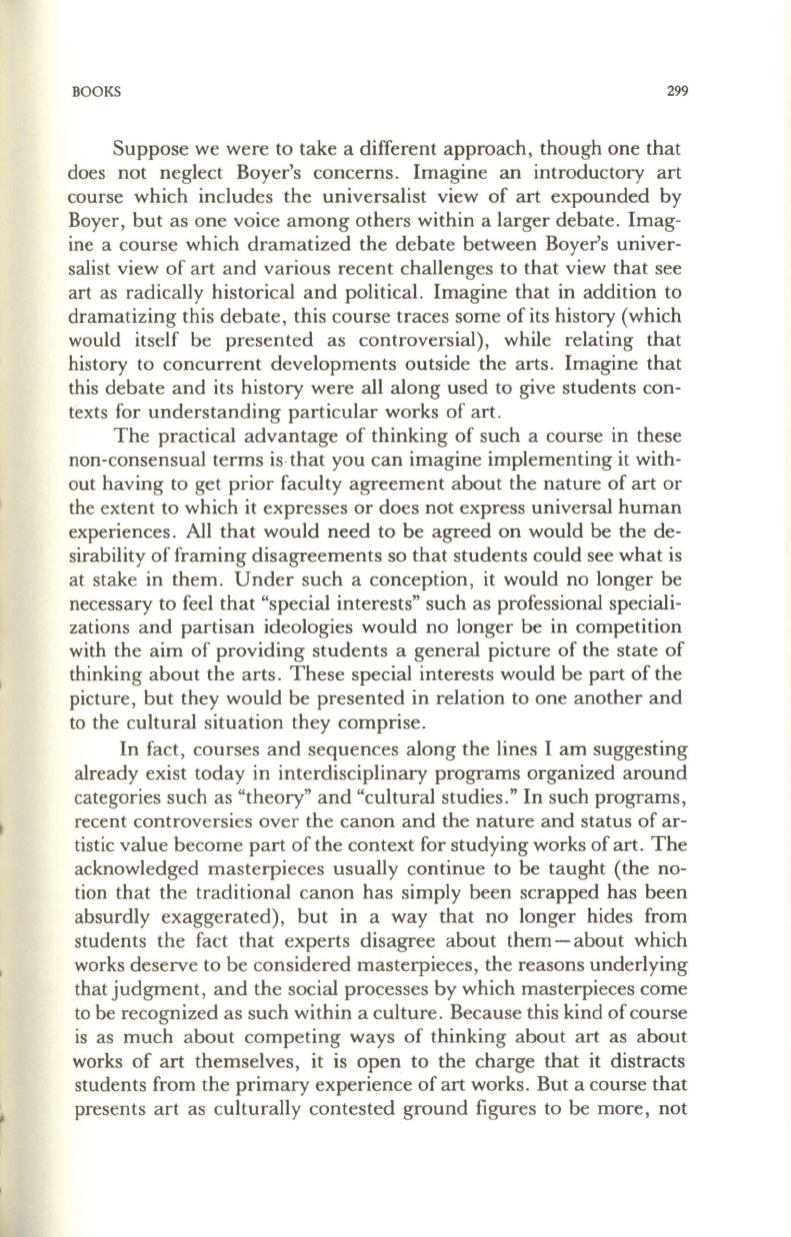
BOOKS
299
Suppose we were to take a different approach, though one that
does not neglect Boyer's concerns. Imagine an introductory art
course which includes the universalist view of art expounded by
Boyer, but as one voice among others within a larger debate. Imag–
ine a course which dramatized the debate between Boyer's univer–
salist view of art and various recent challenges to that view that see
art as radically historical and political. Imagine that in addition to
dramatizing this debate, this course traces some of its history (which
would itself be presented as controversial), while relating that
history to concurrent developments outside the arts. Imagine that
this debate and its history were all along used to give students con–
texts for understanding particular works of art.
The practical advantage of thinking of such a course in these
non-consensual terms is-that you can imagine implementing it with–
out having to get prior faculty agreement about the nature of art or
the extent to which it expresses or does not express universal human
experiences. All that would need to be agreed on would be the de–
sirability of framing disagreements so that students could see what is
at stake in them. Under such a conception, it would no longer be
necessary to feel that "special interests" such as professional speciali–
zations and partisan ideologies would no longer be in competition
with the aim of providing students a general picture of the state of
thinking about the arts. These special interests would be part of the
picture, but they would be presented in relation to one another and
to the cultural situation they comprise.
In fact, courses and sequences along the lines I am suggesting
already exist today in interdisciplinary programs organized around
categories such as "theory" and "cultural studies ." In such programs,
recent controversies over the canon and the nature and status of ar–
tistic value become part of the context for studying works of art. The
acknowledged masterpieces usually continue to be taught (the no–
tion that the traditional canon has simply been scrapped has been
absurdly exaggerated), but in a way that no longer hides from
students the fact that experts disagree about them - about which
works deserve to be considered masterpieces, the reasons underlying
that judgment, and the social processes by which masterpieces come
to be recognized as such within a culture . Because this kind of course
is as much about competing ways of thinking about art as about
works of art themselves, it is open to the charge that it distracts
students from the primary experience of art works. But a course that
presents art as culturally contested ground figures to be more, not


